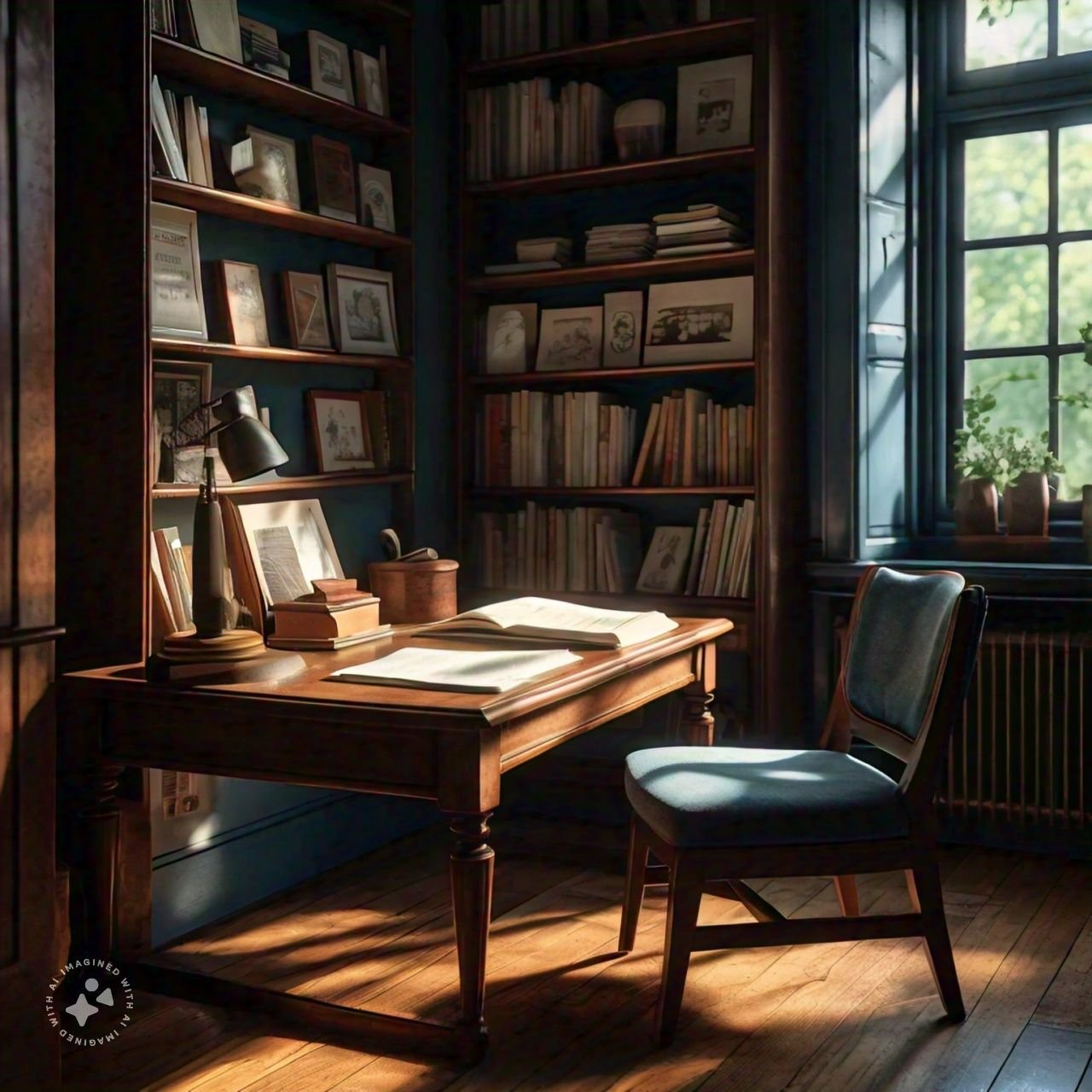Creating a distraction-free study environment at home can seem like an uphill battle, especially with the lure of comfy couches and noisy siblings. But fear not! With a few strategic tweaks, you can transform any space into a productivity powerhouse. Let’s explore how to set up your ultimate study haven.
Choose the Right Location
Picking the right spot for your study area is crucial. Opt for a quiet corner away from the hustle and bustle of daily household activities. Avoid high-traffic areas like the kitchen or living room. If possible, choose a room with a door you can close. This simple barrier can work wonders in keeping distractions at bay. Plus, you get the added bonus of feeling like a super-important executive every time you close it.
Consider Natural Light
Natural light can significantly impact your focus and mood. Try to set up your study space near a window. If that’s not possible, ensure you have adequate lighting with a good desk lamp. Avoid harsh fluorescent lights that can cause eye strain and headaches.
Minimal Noise Areas
Avoid areas with constant noise, like rooms adjacent to the street or a bustling living room. If noise is unavoidable, consider using white noise machines or noise-canceling headphones to create a buffer zone of silence.
Declutter Your Study Space
Clutter is the nemesis of concentration. Keep your study space tidy and organized. Invest in some storage solutions like shelves, drawers, or even just a few good boxes to keep everything in its place. A clean workspace not only helps you focus but also makes it easier to find your materials when you need them. Think of it as the Marie Kondo approach to studying: if it doesn’t spark joy (or productivity), it’s got to go!
Organize Your Supplies
Ensure that everything you need is within arm’s reach. Use desk organizers, file holders, and storage bins to keep your materials neatly arranged. This way, you won’t waste time searching for a pen or your calculator when you’re in the middle of a study session.
Regular Cleaning Routine
Make it a habit to tidy up your study area at the end of each day. A few minutes spent putting things back in their place can save you a lot of stress and time later. Plus, starting your study session in a clean space sets a positive tone for productivity.
Invest in Comfortable Furniture
Your chair and desk are your study throne and command center. Invest in a good, ergonomic chair that supports your back and promotes good posture. Your desk should be spacious enough to hold your essentials without feeling cramped. If you’re feeling fancy, consider a standing desk to switch things up. Remember, comfort is key, but don’t get too cozy – you’re here to study, not nap.
Ergonomic Chair
A chair with good lumbar support is essential. It helps maintain proper posture and reduces the risk of back pain. Look for chairs with adjustable height and armrests to suit your body’s needs.
Proper Desk Setup
Ensure your desk is at the right height. Your elbows should be at a 90-degree angle when typing. Keep your monitor at eye level to avoid neck strain. A well-arranged desk can improve your focus and efficiency.
Control Noise Levels
Noise can be a major distraction. If you’re in a noisy household, noise-canceling headphones can be a game-changer. Alternatively, play some soft instrumental music or white noise to drown out background sounds. Apps like Spotify and YouTube have plenty of playlists designed to boost concentration. Just make sure your “study playlist” doesn’t turn into an impromptu karaoke session.
White Noise and Music
White noise machines or apps can create a consistent background sound that masks other noises. Similarly, instrumental music or nature sounds can enhance focus without being distracting.
Noise-Canceling Headphones
If you can’t control the noise in your environment, invest in a good pair of noise-canceling headphones. They can significantly reduce background noise, allowing you to concentrate better on your studies.
Manage Digital Distractions
In the age of smartphones and social media, digital distractions are a real threat. Use apps like Focus@Will or the Pomodoro technique to stay on track. Consider installing website blockers to prevent you from wandering onto distracting sites. Set specific times to check your phone or social media, and stick to them. Remember, those cat videos will still be there after you’ve aced your study session.
Website Blockers
Use browser extensions like StayFocusd or apps like Freedom to block distracting websites during your study time. This can help you resist the temptation to check social media or news sites.
App Control
There are several apps designed to minimize phone distractions. Apps like Forest and Focus@Will help you stay focused by limiting access to distracting apps and websites.
Personalize Your Space
Your study space should reflect your personality and inspire you to work. Add some motivational quotes, plants, or even a vision board. But be careful not to overdo it – you don’t want your study area turning into an art gallery. A few personal touches can make your space feel more inviting and less like a prison cell.
Motivational Quotes
Place quotes that inspire you to work hard and stay focused. Whether it’s a famous quote or something personal, seeing these reminders can boost your motivation.
Plants and Decor
Adding a few plants can make your study area feel more vibrant and alive. Plants are known to improve air quality and reduce stress. Choose low-maintenance varieties like succulents if you don’t have a green thumb.
Establish a Routine
Consistency is key when it comes to studying. Try to study at the same time each day to build a habit. Your brain loves routines and will start to associate your study space with focus and productivity. Plus, having a set schedule can help you avoid the dreaded procrastination monster.
Set Study Times
Pick specific times of the day dedicated to studying and stick to them. Whether it’s early morning or late at night, find what works best for you and make it a part of your daily routine.
Break Tasks into Chunks
Break your study tasks into manageable chunks. Use the Pomodoro technique: study for 25 minutes, then take a 5-minute break. Repeat this cycle to maintain focus and avoid burnout.
Benefits of Chunking
Breaking down your study tasks into smaller chunks makes them feel more manageable and less overwhelming. It also allows you to track your progress more effectively and gives you a sense of accomplishment with each completed chunk.
Implementing the Pomodoro Technique
The Pomodoro technique is a popular time management method that can help improve your productivity. Set a timer for 25 minutes and focus solely on your task during that time. When the timer goes off, take a short break to rest and recharge. Repeat this cycle as needed throughout your study session.
Adapting the Technique to Your Needs
Feel free to adjust the Pomodoro technique to suit your preferences and study style. Some people find that shorter or longer study intervals work better for them, so experiment to find what works best for you. The key is to maintain a balance between focused work and relaxation.
The Importance of Breaks
Studies have shown that taking regular breaks can improve concentration and productivity. It’s essential to give your mind a rest to process information and avoid burnout. Remember, breaks are not a waste of time; they are a crucial part of effective studying.
Active Break Ideas
Use your breaks to move around and get your blood flowing. Do some light exercises, yoga stretches, or even a quick dance session to re-energize. Physical activity can boost your mood and keep you alert.
Concluding Thoughts
Creating a distraction-free study environment at home doesn’t have to be complicated. With a few thoughtful changes, you can turn any space into a productive study sanctuary. Remember, the key is to find what works best for you and stick with it. Happy studying!
By following these tips, you’ll be well on your way to creating a study space that fosters focus and productivity. Ready to get started? Let’s transform your study environment today!
Final Tips
Remember to be patient with yourself as you set up your study environment. It might take some time to find what works best for you. Keep experimenting with different setups and routines until you find your perfect study zone.
Additional Resources
If you need more tips on how to create a distraction-free study environment at home, check out these resources:
- Lifehack: How To Study Effectively: 7 Simple Tips
- College Info Geek: How to Create a Great Study Space (With Examples
With these tips and resources, you’ll be equipped to set up a study space that enhances your learning and keeps distractions at bay. Now, go forth and conquer your studies!











